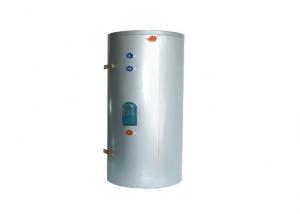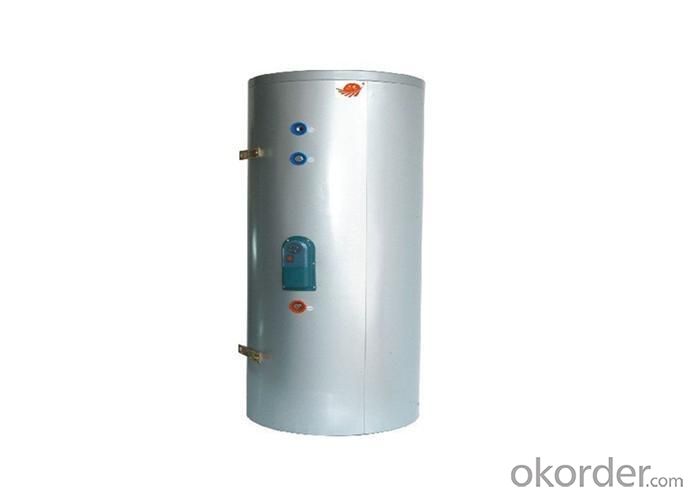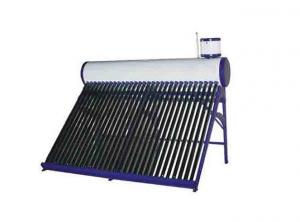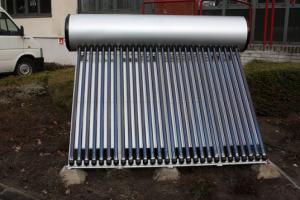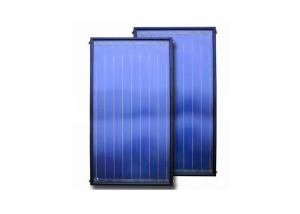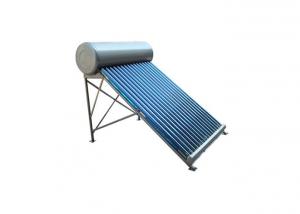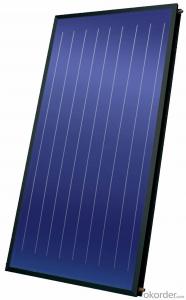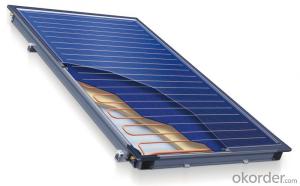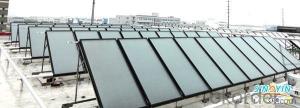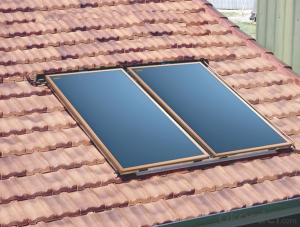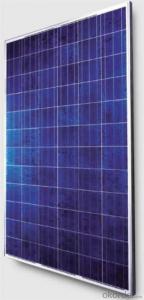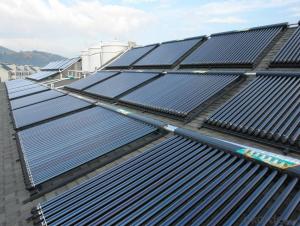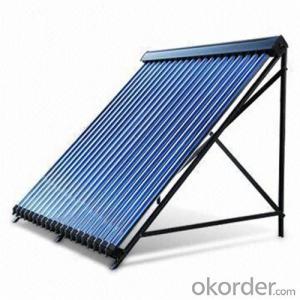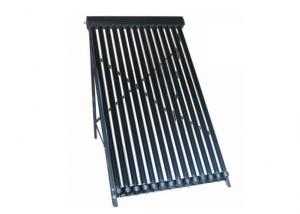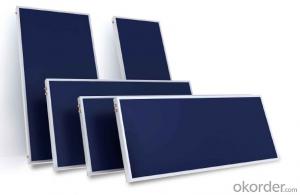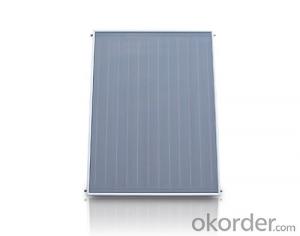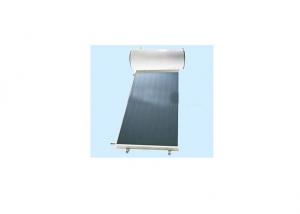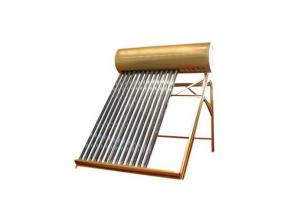Sunmaxx Solar Collectors Split Pressurized Water Tank
- Loading Port:
- China Main Port
- Payment Terms:
- TT or LC
- Min Order Qty:
- 2 Sets set
- Supply Capability:
- 1000 Sets per Month set/month
OKorder Service Pledge
OKorder Financial Service
You Might Also Like
Match with solar collector perfectly
High water heating efficiency
Good hot water preservation
Features:
1. Perfect hot water temperature preservation.
2. Matching with pressrized solar collector plays high solar energy absorption efficiency.
3. One copper coil tank, double copper coils tank, three copper coils tank are available.
Capacity (Liter) | Inner tank Thickness&diameter (mm) | Insulation Layer (mm) | Outer tank Thickness&Diameter&Height |
100L | φ1.2/Φ370 | 50 | φ0.55/Φ470/h1110 |
150L | φ1.2/Φ370 | 50 | φ0.55/Φ470/h1520 |
200L | φ1.5/Φ470 | 45 | φ0.55/Φ560/h1320 |
250L | φ1.5/Φ470 | 45 | φ0.55/Φ560/h1620 |
300L | φ1.5/Φ470 | 50 | φ0.55/Φ560/h1870 |
400L | φ2.0/Φ600 | 50 | φ0.55/Φ700/h1630 |
500L | φ2.0/Φ600 | 50 | φ0.55/Φ700/h1920 |
- Q: Can solar collectors be used for heating air?
- Yes, solar collectors can be used for heating air. Solar air heating systems use solar collectors to absorb sunlight and convert it into heat energy, which is then used to heat air that can be circulated and used for various applications such as space heating in buildings or drying processes.
- Q: Are there any limitations to the angle of installation for solar collectors?
- Solar collectors have certain limitations regarding their installation angle. The most suitable angle for solar collectors depends on the latitude of the installation site and the specific time of the year. Generally, it is recommended to install solar collectors at an angle that maximizes their exposure to sunlight throughout the entire year. In regions situated closer to the equator, where the sun remains high in the sky throughout the year, solar collectors are typically installed at a steeper angle, typically around 30 to 40 degrees. This allows them to absorb the maximum amount of solar radiation during daylight hours. On the other hand, in areas located farther from the equator, where the sun's angle varies significantly throughout the year, solar collectors are often installed at a shallower angle. This helps to optimize the absorption of solar energy, especially during the winter months when the sun is lower in the sky. Nevertheless, there are limitations to the installation angle. If the angle is too steep or too shallow, it can lead to reduced energy production. Steeper angles may cause snow or debris to accumulate on the solar panels, thereby reducing their efficiency. Conversely, shallower angles may result in lower absorption of solar radiation, particularly during the winter season. Various factors, such as space limitations, structural restrictions, and aesthetic considerations, can also impose restrictions on the installation angle. In certain cases, the angle may need to be adjusted to accommodate these factors, even if it is not the optimal angle for maximum energy production. In conclusion, while there are limitations to the installation angle of solar collectors, careful consideration of the location, time of year, and other relevant factors can help ensure the highest possible energy production and efficiency.
- Q: Can solar collectors be used for generating electricity in winter?
- Yes, solar collectors can still be used for generating electricity in winter. While the winter months typically have less sunlight and shorter days, solar collectors can still harness the available sunlight and convert it into electricity. However, the overall electricity output may be lower compared to other seasons due to the reduced solar radiation.
- Q: Can solar collectors be used for heating fire stations?
- Yes, solar collectors can be used for heating fire stations. Solar thermal systems can generate heat by harnessing the sun's energy, which can be utilized to provide heating in fire stations. These systems involve the use of solar collectors or panels to capture solar radiation and convert it into heat, which can then be used to warm the building or supplement the existing heating system. Implementing solar collectors can help reduce energy costs and environmental impact, making it a viable option for heating fire stations.
- Q: Can solar collectors be used in refugee camps?
- Yes, solar collectors can be used in refugee camps. They provide a sustainable and renewable source of energy, which can be used for various purposes such as lighting, cooking, heating, and charging electronic devices. This can greatly improve the living conditions and quality of life for refugees, especially in areas where access to electricity is limited or unreliable. Additionally, solar collectors are portable and can be easily installed in temporary settlements, making them an ideal solution for powering refugee camps.
- Q: What is the role of a solar collector in a solar thermal system?
- The role of a solar collector in a solar thermal system is to capture and convert sunlight into heat energy. It is responsible for absorbing the sun's radiation and transferring it to a heat transfer fluid or directly to a storage medium. This heat can then be used for various purposes such as heating water, generating electricity, or space heating.
- Q: Can solar collectors be used to generate steam for industrial processes?
- Solar collectors, including parabolic troughs and solar power towers, have the capability to generate steam for industrial processes. By concentrating sunlight onto a receiver, these collectors heat a working fluid, typically water, which is then converted into steam. The steam produced can serve various purposes in industries such as power generation, heating, or as a source of process heat in sectors like food processing, chemical manufacturing, or textile production. Solar steam generation presents a renewable and sustainable alternative to traditional steam generation methods that rely on fossil fuels, thereby reducing greenhouse gas emissions and decreasing our dependence on finite resources. Moreover, continuous advancements in solar thermal technology enhance the efficiency and cost-effectiveness of solar steam generation, making it an increasingly feasible choice for industrial processes.
- Q: Can solar collectors be used for heating community centers?
- Yes, solar collectors can be used for heating community centers. Solar collectors, such as solar thermal panels, can capture the sun's heat and convert it into usable energy to provide heating for community centers. This renewable energy source can be a cost-effective and environmentally friendly solution for meeting the heating needs of community centers.
- Q: Are solar collectors suitable for heating shopping malls?
- Yes, solar collectors are suitable for heating shopping malls. They can effectively harness the sun's energy to provide heating, reducing reliance on traditional heating systems and lowering energy costs. Additionally, solar collectors are environmentally friendly, promoting sustainability and reducing carbon emissions. However, the feasibility and effectiveness of solar collectors in heating shopping malls may depend on factors such as the mall's size, location, and energy requirements.
- Q: Do solar collectors work in cold climates?
- Yes, solar collectors work in cold climates. While the efficiency of solar collectors can be slightly reduced in colder temperatures, they still generate electricity or heat by absorbing sunlight. Additionally, advancements in technology have made solar panels more effective in capturing and converting solar energy, making them increasingly viable in cold weather conditions.
1. Manufacturer Overview
| Location | Zhejiang, China |
| Year Established | 2004 |
| Annual Output Value | US$10 Million - US$50 Million |
| Main Markets | North America South America Eastern Europe Southeast Asia Africa Oceania Mid East Eastern Asia Western Europe |
| Company Certifications | ISO 9001:2000 ;CE ;Solar Keymark |
2. Manufacturer Certificates
| a) Certification Name | |
| Range | |
| Reference | |
| Validity Period |
3. Manufacturer Capability
| a) Trade Capacity | |
| Nearest Port | Shanghai,Ningbo |
| Export Percentage | 51% - 60% |
| No.of Employees in Trade Department | 6-10 People |
| Language Spoken: | English, Chinese |
| b) Factory Information | |
| Factory Size: | 10,000-30,000 square meters |
| No. of Production Lines | Above 10 |
| Contract Manufacturing | OEM Service Offered Design Service Offered Buyer Label Offered |
| Product Price Range | Average |
Send your message to us
Sunmaxx Solar Collectors Split Pressurized Water Tank
- Loading Port:
- China Main Port
- Payment Terms:
- TT or LC
- Min Order Qty:
- 2 Sets set
- Supply Capability:
- 1000 Sets per Month set/month
OKorder Service Pledge
OKorder Financial Service
Similar products
Hot products
Hot Searches
Related keywords
